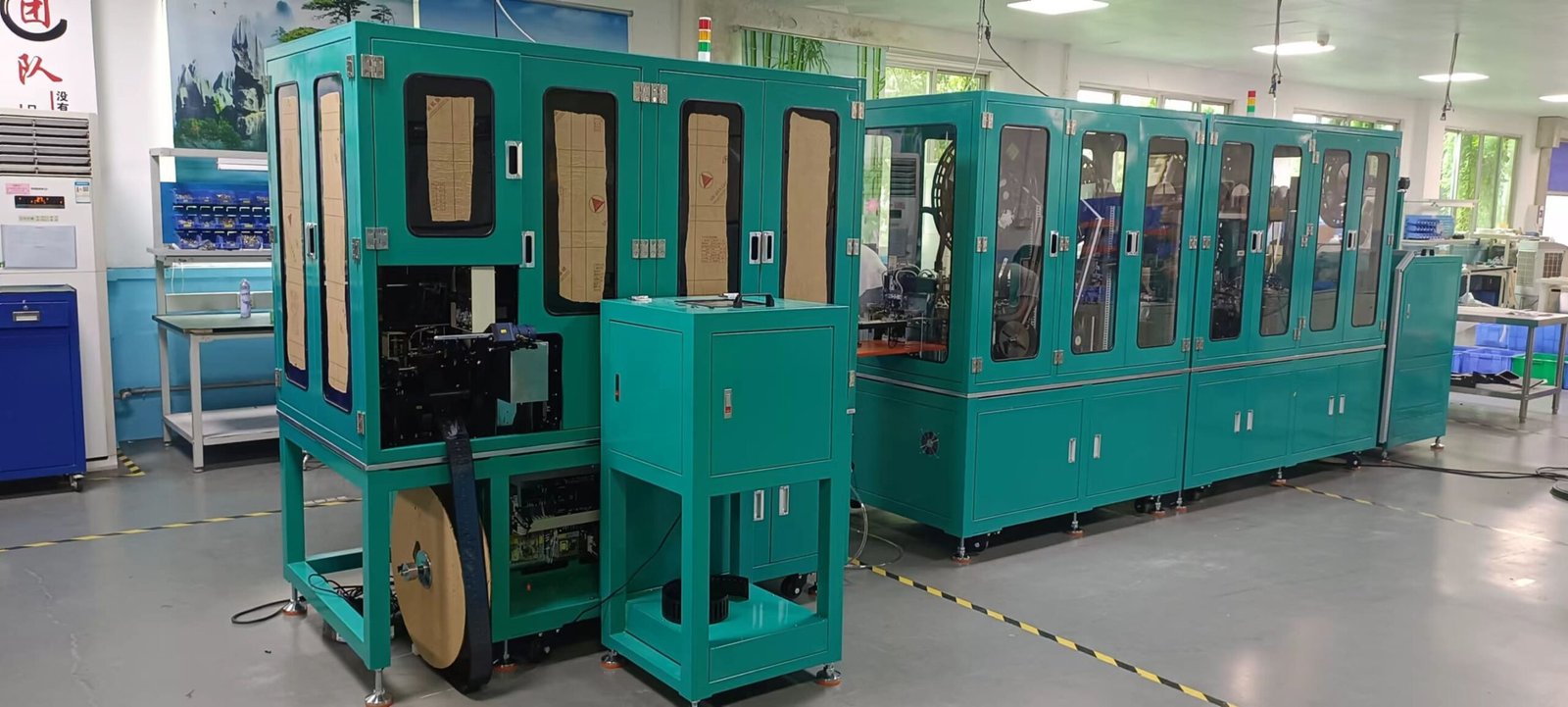Dongguan City Jiexin Electromechanical Equipment CO., LTD.
15+yrs Professional High-speed connectors & Fakra Cable assemblies automated assembly line & solutions
15+yrs Professional High-speed connectors & Fakra Cable assemblies automated assembly line & solutions
This blog will according to automated assembly machines Types, Applications, Future Prospects, Acceptance inspection and Maintenance describes the World of Automated Assembly Machines:
What are automated assembly machines?
The advent of automation has revolutionized the manufacturing industry, making it more efficient, cost-effective, and reliable. One of the key components of this revolution is the automated assembly machine, which has become an indispensable tool in various industries. This comprehensive blog post delves into the types of assembly machines, their applications, future prospects, global purchasing trends, acceptance procedures, and maintenance tips. So, let’s dive into the world of automated assembly machines and explore their significance in today’s manufacturing landscape.


1. Rotary Indexing Machines:
These machines use a rotary table to move the workpiece through various assembly stations. They are ideal for high-volume production and offer excellent repeatability and accuracy.
2. Linear Indexing Machines:
These machines use a linear conveyor system to transport the workpiece between assembly stations. They are suitable for medium to high volume production and offer flexibility in terms of layout and configuration.
3. Continuous Motion Machines:
These machines perform assembly operations while the workpiece is in continuous motion. They are ideal for high-speed assembly processes and can achieve high production rates.
4. Robotic Assembly Machines:
These machines use robotic arms to perform assembly tasks. They offer high flexibility and can be easily reprogrammed to accommodate different products or assembly processes.
5. Flexible Assembly Systems:
These systems combine various assembly technologies, such as robotics, conveyors, and vision systems, to create a highly adaptable and versatile assembly solution.


1. Automotive:
Assembly machines are used for various automotive components, such as engines, transmissions, and electronic systems.
2. Electronics:
Assembly machines are used for assembling printed circuit boards, connectors, and other electronic components.
3. Medical Devices:
Assembly machines are used for manufacturing medical devices, such as syringes, catheters, and diagnostic equipment.
4. Aerospace:
Assembly machines are used for assembling aircraft components, such as engines, avionics, and structural elements.
5. Consumer Goods:
Assembly machines are used for manufacturing household appliances, toys, and other consumer products.
1. Industry 4.0:
The fourth industrial revolution, characterized by the integration of digital technologies and automation, will drive the demand for advanced assembly machines.
2. Miniaturization:
As products become smaller and more complex, the need for precise and accurate assembly machines will increase.
3. Customization:
The growing trend of mass customization will require flexible assembly systems that can easily adapt to changing product requirements.
4. Sustainability:
The increasing focus on sustainable manufacturing practices will drive the adoption of energy-efficient and eco-friendly assembly machines.

1. Factory Acceptance Test (FAT):
The FAT is conducted at the manufacturer’s facility to ensure that the machine meets the specified requirements and performs the required functions.
2. Site Acceptance Test (SAT):
The SAT is conducted at the customer’s facility after the machine has been installed and integrated into the production line. This test ensures that the machine operates correctly in its intended environment.
3. Performance Qualification (PQ):
The PQ is conducted to verify that the machine consistently produces products that meet the required quality standards.
4. Documentation Review:
The customer reviews the machine’s documentation, including manuals, drawings, and software, to ensure that it meets the specified requirements.

1. Regular Inspections:
Conduct routine inspections to identify any signs of wear or damage and address them promptly.
2. Lubrication:
Ensure that all moving parts are adequately lubricated to minimize friction and prevent premature wear.
3. Cleaning:
Keep the machine clean and free of debris to ensure optimal performance and prevent contamination.
4. Calibration:
Regularly calibrate the machine to ensure that it maintains its accuracy and repeatability.
5. Software Updates:
Keep the machine’s software up-to-date to ensure optimal performance and compatibility with other systems.
Automated assembly machines play a crucial role in modern manufacturing, offering increased efficiency, precision, and flexibility. By understanding the different types of assembly machines, their applications, future prospects, global purchasing trends, acceptance procedures, and maintenance tips, manufacturers can make informed decisions when investing in these essential pieces of equipment. As the manufacturing landscape continues to evolve, automated assembly machines will remain a vital component of the industry, driving innovation and productivity. The more trends that you needs pls free contact our tech team.
Get notified about new articles